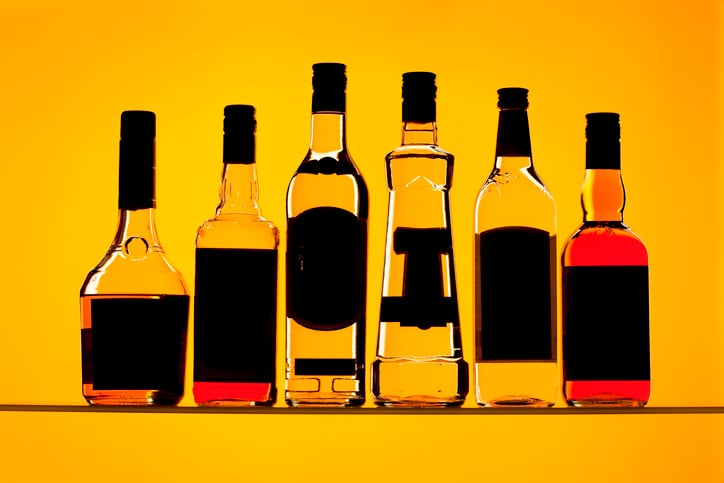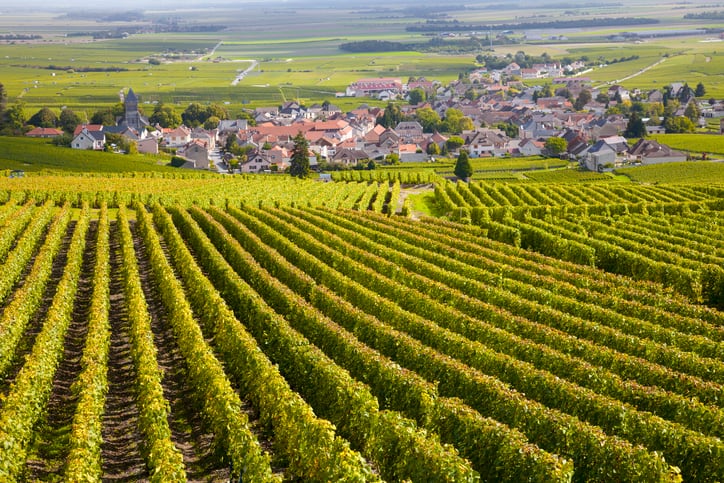And it’s a hot topic: earlier this year, the US Surgeon General also recommended such labels.
Like the US Surgeon General, the WHO highlights that public awareness of the link between alcohol and cancer remains ‘alarmingly low’.
Europe: heavy alcohol consumption
Per capita alcohol consumption in the European Union is twice the world average, with one in 19 adults dying form alcohol-attributable causes, and three out of every 10 alcohol-attributable deaths due to cancers, according to the WHO.
But most consumers aren’t aware of this. The WHO’s Europe division conducted a study across 14 European Region countries: finding that only 15% of respondents knew alcohol causes breast cancer, and 39% were aware of a link to colon cancer.
And yet these cancers account for the highest proportion of alcohol-related cancers in the EU among women (breast cancer) and men (colon cancer).
With this in mind, the WHO is calling for mandatory health warnings on alcohol, including cancer warnings.
WHO: Key findings and policy recommendations
Mandatory labeling: Countries should mandate health warning labels on alcohol products (rather than rely on self-regulation of alcohol producers). The impact of health warnings, however, depends on design, content and placement on the labels.
Prominent health warning labels: Alcohol products should display clear and prominent health warnings. These can be presented in text-only format or combined with pictograms.
Cancer warnings: Research involving nearly 20,000 participants from 14 European Region countries found that cancer warnings on alcohol labels significantly boost awareness of alcohol’s cancer risks.
Beyond QR codes: The alcohol industry generally supports the introduction of QR codes on products as a means of conveying information: however, a WHO study showed that only 0.26% of shoppers scanned QR codes for health information. That underscores the ‘importance of visible, on-pack labels’, says the WHO.
“Alcohol health warning labels: a public health perspective for Europe”
There are currently four EU Member States with legislation on health warnings on alcohol container labels: France, Germany, Ireland and Lithuania.
Ireland will be the first country in the EU with a warning referring to cancer, due to be implemented in May 2026.
New ground: Ireland
Ireland will introduce health warnings on products from May 2026.
Alcohol labels will have to contain a warning to inform people of the danger of alcohol consumption; the danger of drinking when pregnant; and the link between alcohol and cancer.
Products will also have to contain information such as the quantity of grams of alcohol and the number of calories.
Similar health information will be made available for customers in licensed premises.
However, European alcohol organizations have criticized the new regulations, alleging they breach EU law because they deviate from EU harmonised labelling rules (thus making it more difficult for non-Irish producers and distributors to sell their products in the country).
The alcohol industry, however, emphasizes any messaging should be focused to ‘inform, not alarm’.
“Many lifestyle choices carry potential risks and potential benefits, and the consumption of alcohol is no exception,” said a spokesperson from spiritsEUROPE, the trade organization for the industry.
“Decades of evidence suggest that for most adults, the risks posed by moderate alcohol consumption are low, but it’s vital to avoid excess—and for some, the best choice may be not to drink at all. We do not recommend that anyone drink to achieve health benefits and urge adults who choose to consume alcoholic beverages to follow the respective low-risk drinking guidelines of their country or consult with a healthcare professional to determine what is best for them.
“Alcohol-related health risks are complex and vary based on individual factors such as sex, diet, weight, genetics, and medical conditions. The nuanced understanding of alcohol’s effects – especially at different levels of consumption – requires more space and context than what can typically be conveyed on a label. Comprehensive consumer information must include absolute and relative risk data, clarify likelihood of harm, and actionable mitigation strategies to help consumers make informed choices.”
“Numerous peer-reviewed publications have shown Health Warning Labels (HWLs) to be rather ineffective in inducing behaviour change, particularly among high-risk drinkers.Given this comparatively weak foundation, imposing HWLs is ultimately a political decision, rather than one based on robust data.”
Moderation and responsibility are on the rise
“Since 2010, harmful drinking and global alcohol-attributable mortality rates have been plummeting, by 20% according to data from the recent WHO Global Status Report on Alcohol and Health," said Julia Leferman, Secretary General of The Brewers of Europe.
"With binge drinking falling, particularly among young adults (by 15% for 15-19 year-olds between just 2014 and 2019), underage drinking on the decline in all age categories, drink drive fatalities dropping by a third and overall alcohol consumption also decreasing in the EU, it is clear that moderation and responsibility are on the rise when it comes to alcohol. It also shows that the strategies in place at the global, regional and national level are working.
"With an alcohol and health debate that is complex, consumers need comprehensive, objective information, placed in context, rather than misleading, simplistic messages that don’t help people to understand the risks associated with different amounts and patterns of consumption. Working together, we can promote moderation, both safeguarding public health and respecting adults’ freedom to make informed, responsible decisions about whether and how much they drink.”
Dr Ignacio Sanchez Recarte, secretary general of the CEEV - Comité Européen des Entreprises Vins, questions how effective the impact of health warnings is.
“We support the provision of better information to minimise harmful alcohol consumption, particularly highlighting the importance of moderate and responsible consumption,” he said. “However, available evidence indicates that health warnings do not have an impact on average alcohol consumption and harmful use of alcohol. Evidence on alcoholic beverages health warnings suggests that they may only increase moderately consumers awareness.”
The WHO’s report also clearly pushes for alcohol information to be put on pack, rather than online, given its immediacy. But Sanchez Recarte says that will means simplifying the issue.
“Health information on cancer risk can be complex and cannot be accurately conveyed to the consumer with a simplistic pictogram, image or small sentence as suggested in the report. Better methods of communicating alcohol consumption and responsible drinking messages are required to achieve positive outcomes. For example, the e-labelling that the report criticise, provides in reality more comprehensive and accurate information for consumers and enables the continued smooth functioning of the Single Market. The pilot experience on QR-code scanning mentioned in the report can not be considered as solid and scientifically valid reference for policy decision.”
“Concerning wine, while scientific evidence shows that harmful use of alcohol may be associated with an increased risk of developing cancer, it shows that no increased risk is associated with wine consumption in moderation, with a meal, as part of healthy lifestyles and dietary patterns, and in particular with the Mediterranean diet. Alarmistic and simplistic warnings should therefore not be implemented.
“In conclusion, the inclusion of health warnings on cancer risk in alcohol labels is far from been a simple, inexpensive, and more importantly, an efficient measure, as it is suggested in the report.
“The priority shall be on solutions that help fighting alcohol abuse and not alcohol consumption as the report seems to focus on.”



